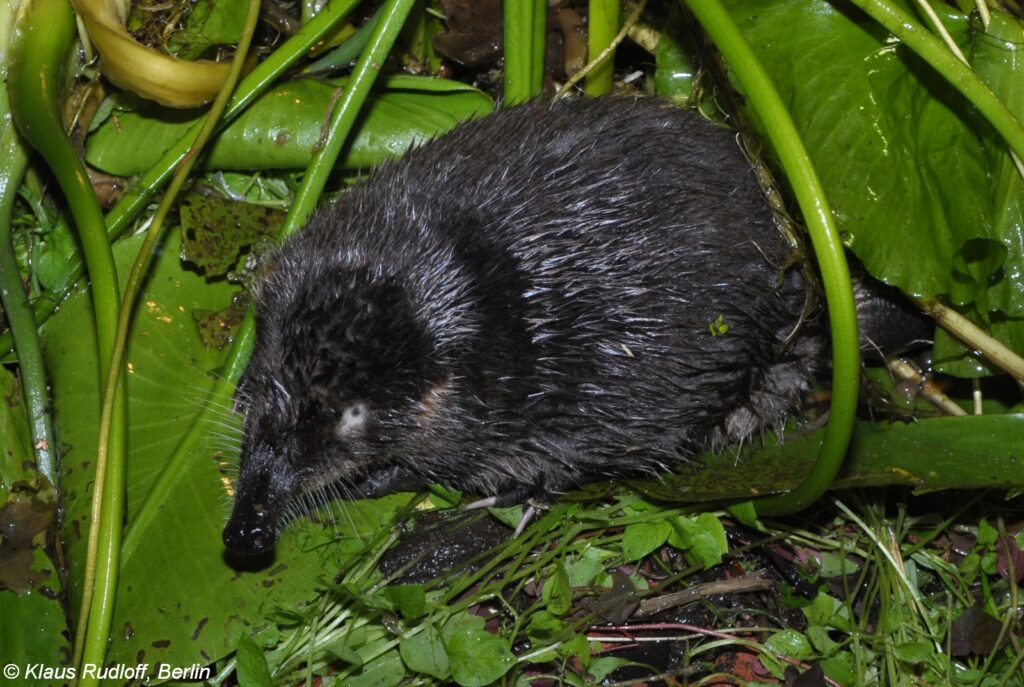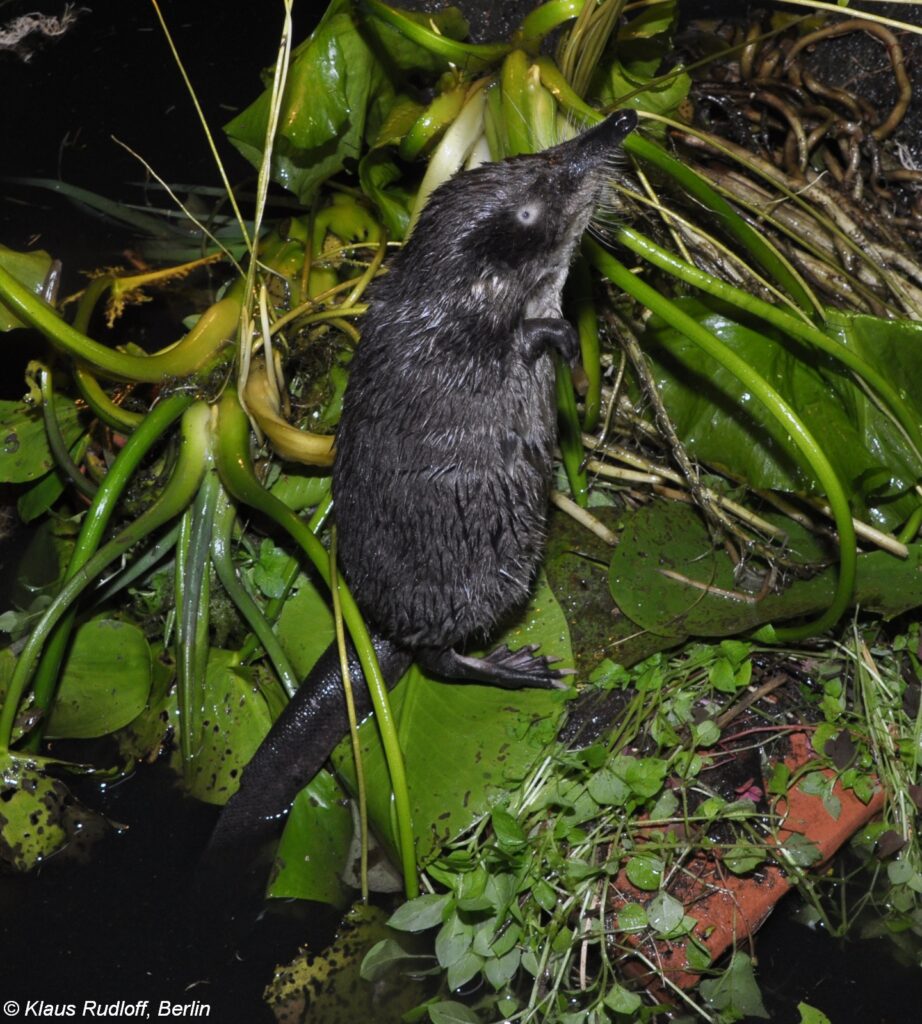Russian Desmans (Desmana moschata) are semi-aquatic creatures related to moles, with an unusual appearance of rounded bodies, paddle-like feet, flattened tails and long snouts to help them dive and probe for prey underwater. They are the only species that still exist within their genus, and are restricted nowadays to few waterways in Russia, Ukraine and Kazakhstan. Sadly, numbers of these small mole-mermaids are plummeting: Russian Desmans have been “up-listed” from Endangered to Critically Endangered in the latest IUCN Red List Update (Monday 11th December).
Based on surveys undertaken in Russia, the decline of this species is estimated to have reached 83% over the previous decade, and it likely facing a similar scenario across the remainder of its fragmented range in Ukraine and Kazakhstan. Scientists have suggested that there are probably less than 4,000 individuals remaining in Russia, and potentially only a few hundred in Ukraine.

Russian Desman (Photo credit Klaus Rudloff)
Russian Desmans have rather strict habitat requirements. They prefer waterbodies 2-6 m in depth with rich water-marsh vegetation, bushes and primary forests along the banks, and with high macroinvertebrate abundance.
It is no surprise, then, that infrastructure-, climate- or pollution-induced changes to waterbodies can have devastating impacts on habitat quality for this species. Perhaps more lethally, the widespread use of stationary fishing nets poses a major threat to desmans. The nets, which are prohibited in many regions, are often left in the water for days or even months, drowning any desmans that accidentally get caught. Introduced predators, e.g., American Mink (Neogale vison), and possible competitors, e.g., Muskrats (Ondatra zibethicus), may also be a problem.
What’s next?
In Kazakhstan, the SMSG is supporting a new conservation project with the Association for the Conservation of Biodiversity of Kazakhstan (ACBK) and researchers at North Kazakhstan University. Initially, the project will explore methods of monitoring desmans, including interview surveys with local water users and environmental DNA screening. Read more about this in our recent article here.
Russian Desmans are often referred to as bioindicators of ecosystem health. Their decline is therefore concerning for freshwater habitats and species on a much broader scale, and it is critical that every effort is made to conserve and, ultimately, downlist Russian Desmans on the Red List.

Russian Desman (Photo credit Klaus_Rudloff)
Author: Abi Gazzard (SMSG Programme Officer)




